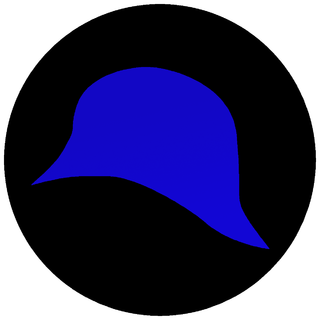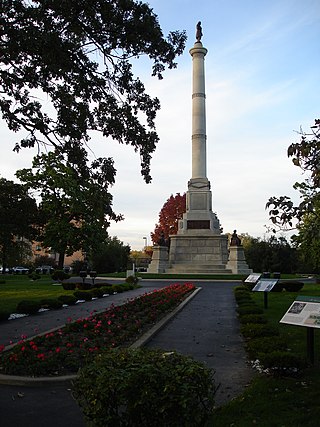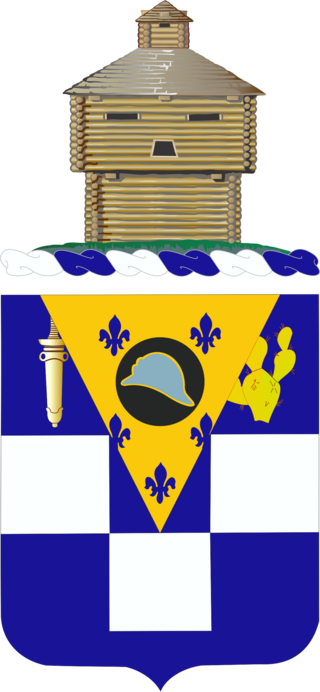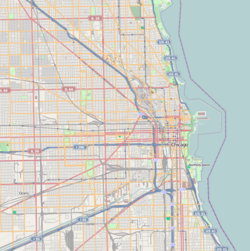
The 369th Infantry Regiment, originally formed as the 15th New York National Guard Regiment before it was re-organized as the 369th upon its federalization and commonly referred to as the Harlem Hellfighters, was an infantry regiment of the New York Army National Guard during World War I and World War II. The regiment mainly consisted of African Americans, but it also included men from Puerto Rico, Cuba, Guyana, Liberia, Portugal, Canada, the West Indies, as well as white American officers. With the 370th Infantry Regiment, it was known for being one of the first African-American regiments to serve with the American Expeditionary Forces during World War I.

The 93rd Infantry Division was a "colored" segregated unit of the United States Army in World War I and World War II. However, in World War I only its four infantry regiments, two brigade headquarters, and a provisional division headquarters were organized, and the divisional and brigade headquarters were demobilized in May 1918. Its regiments fought primarily under French command in that war and saw action during the Second Battle of the Marne. They acquired the nickname Blue Helmets from the French, as these units were issued horizon blue French Adrian helmets. Consequently, its shoulder patch became a blue French helmet, to commemorate its service with the French Army during the German spring offensive.

Robert Sengstacke Abbott was an American lawyer, newspaper publisher and editor. Abbott founded The Chicago Defender in 1905, which grew to have the highest circulation of any black-owned newspaper in the country.

Allen George Newman III was an American sculptor, best known for his statue "The Hiker".

The Bud Billiken Parade and Picnic is an annual parade held since 1929 in Chicago, Illinois. The Bud Billiken Day Parade is the largest African-American parade in the United States. Held annually on the city's south side on the second Saturday in August, the parade route travels on Dr. Martin Luther King Drive through the Bronzeville and Washington Park neighborhoods. At the end of the parade, in the historic Washington public park is a picnic and festival. Robert S. Abbott, the founder and publisher of the Chicago Defender newspaper, created the fictional character of Bud Billiken, which he featured in a youth advice column in his paper. David Kellum, co-founder of the newspaper sponsored Bud Billiken Club and longtime parade coordinator suggested the parade as a celebration of African-American life.

The Battle of Cantigny, fought May 28, 1918 was the first major American battle and offensive of World War I. The U.S. 1st Division, the most experienced of the five American divisions then in France and in reserve for the French Army near the village of Cantigny, was selected for the attack. The objective of the attack was both to reduce a small salient made by the German Army in the front lines but also to instill confidence among the French.

The 87th Battalion, CEF was a Household Foot Guards infantry unit in the Canadian Expeditionary Force during the First World War.

The Stephen A. Douglas Tomb and Memorial or Stephen Douglas Monument Park is a memorial that includes the tomb of United States Senator Stephen A. Douglas (1813–1861). It is located at 636 E. 35th Street in the Bronzeville neighborhood of Chicago, Illinois, near the site of the Union Army and prisoner of war Camp Douglas. The land was originally owned by Douglas’ estate but was sold to the state of Illinois, when it became known as “Camp Douglas” serving first as training grounds for Union soldiers during the Civil War, then as a prisoner of war camp.

The Black Metropolis–Bronzeville District is a historic African American district in the Bronzeville neighborhood of the Douglas community area on the South Side of Chicago, Illinois.
The Bud Billiken Club was a social club for African–American youth in Chicago, Illinois, established in 1923, by the Chicago Defender founder Robert Sengstacke Abbott and its editor, Lucius Harper. The Bud Billiken Club was formed as part of the Defender Junior, the children's page in the newspaper, to encourage reading, appropriate social conduct, and involvement in the community, among the young people of Chicago. Since 1972, the Bud Billiken Club has been known as Bud Billiken Youth. 90 years after it was founded, the organization has grown into a year-round program that supports youth with financial and academic help. They also continue to shine the light on outstanding young people who might have otherwise gone unnoticed.

The Eighth Regiment Armory, located in the Black Metropolis-Bronzeville District of Chicago, Illinois, was the first armory in the United States built for an African-American military regiment, known as the "Fighting 8th". The building later was used by a division of the Illinois National Guard, and during World War I was incorporated into the US Infantry. After closing the armory in the early 1960s, it became the South Central Gymnasium. In 1999, following an extensive renovation, it was reopened as a public high school military academy. The restoration and conversion into a school has been recognized by the National Trust for Historic Preservation.

Ernest Moore Viquesney was an American sculptor best known for his popular World War I monument Spirit of the American Doughboy.

The Haymarket Martyrs' Monument is a funeral monument and sculpture located at Forest Home Cemetery in Forest Park, Illinois, a suburb of Chicago. Dedicated in 1893, it commemorates the defendants involved in labor unrest who were blamed, convicted, and executed for the still unsolved bombing during the Haymarket Affair (1886). The monument's bronze sculptural elements are by artist Albert Weinert. On February 18, 1997, the monument was designated a National Historic Landmark.

The Pennsylvania State Memorial is a monument in Gettysburg National Military Park that commemorates the 34,530 Pennsylvania soldiers who fought in the July 1 to 3, 1863 Battle of Gettysburg during the American Civil War. The memorial stands along Cemetery Ridge, the Union battle line on July 2, 1863. Completed in 1914, it is the largest of the state monuments on the Gettysburg Battlefield.

The 370th Infantry Regiment was the designation for one of the infantry regiments of the 93rd (Provisional) Infantry Division in World War I. Known as the "Black Devils", for their fierce fighting during the First World War and a segregated unit, it was the only United States Army combat unit with African-American officers. In World War II, a regiment known as the 370th Infantry Regiment was part of the segregated 92nd Infantry Division, but did not perpetuate the lineage of the 8th Illinois or World War I 370th, only sharing its numerical designation.

The Spanish–American War Soldier's Monument, also known as the Spanish–American War Memorial or simply Soldiers Monument, is an outdoor sculpture and war memorial monument honoring the dead of the 2nd Oregon Volunteer Infantry Regiment of the Spanish–American War and Philippine–American War. The monument was created by American artist Douglas Tilden and located in Lownsdale Square, in the Plaza Blocks of downtown Portland, Oregon. It features a bronze statue on a marble pedestal and granite base. The monument is part of the City of Portland and Multnomah County Public Art Collection courtesy of the Regional Arts & Culture Council.

The 178th Infantry Regiment is an infantry regiment of the United States Army, Illinois Army National Guard. It traces its history back to the Illinois state militia and has served in several American wars since its founding. The regiment is unique because its original members were part of a segregated "colored" unit. The regiment's 1st Battalion still exists today as an Air assault battalion.

The Royal Artillery Boer War Memorial is located on the south side of The Mall in Central London, close to the junction with Horse Guards Road at the northeast corner of St James's Park. Unveiled in 1910, it marks the deaths of the 1,083 soldiers of the Royal Artillery who died in the Second Boer War from 1899 to 1902 It has been a listed building since 1970.

The Doughboy is a war memorial and neighborhood landmark in the Lawrenceville neighborhood of Pittsburgh, Pennsylvania. Located at the Y-shaped intersection of Lawrenceville's two busiest commercial streets, Butler Street and Penn Avenue, the monument has become a symbol of the neighborhood and "probably the most well known veterans monument in Pittsburgh". In 2019, it was listed as a contributing property in the Lawrenceville Historic District.
























